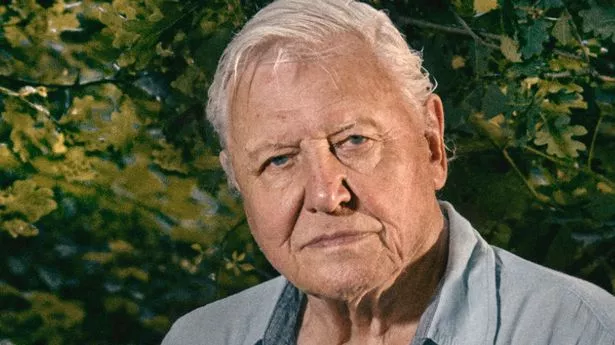He is two years off his centenary but Sir David Attenborough shows no sign of letting up when it comes to presenting his beloved natural history programmes.
The 98-year-old broadcasting veteran has been confirmed for the BBC’s latest landmark series, Asia, this autumn. And insiders say he’s just as enthused and excited about the films as he has been about all the previous ones, which include Blue Planet, Planet Earth and Frozen Planet.
Sir David has previously admitted that he “dreads” the prospect of not being able to work, and would only stop if his health prevented him from doing a good job. Explaining a few years ago that he spends a lot of time crafting his scripts, he added: “If I think I'm not producing commentary with any freshness, I hope I would be able to recognise it before someone else told me. If I thought I was turning in substandard work, that would stop me.”
Thankfully he has suffered no such trouble, and insiders say his scripts for the new series are “quite brilliant”.
Mike Gunton, his long-term collaborator and creative director of the BBC’s Natural History Unit, doesn’t think he’ll ever see Sir David retiring. Earlier this year he insisted: “It’s never going to happen.” Four years in the making, the seven-part Asia is the first time the wildlife of the world’s largest continent has been the focus of a major BBC series.
Natural history commissioning chief Sreya Biswas says the series will be “a feast for the eyes”, adding: “We are absolutely delighted to have Sir David Attenborough presenting our fantastic new landmark series Asia for BBC1. Asia is a continent steeped in beauty and intrigue with some of the most wonderfully diverse habitats on the planet.”
With new filming locations opening up in areas previously off-limits to crews, it was possible to tell wildlife stories from the region for the first time in decades. Asia promises to reveal remarkable landscapes along with dramatic and previously unseen animal behaviour. One story will take viewers into the foothills of the Himalayas, amid the forests of bamboo, where they will meet Asia’s shyest and possibly cutest mammal: the red panda.
The series will also show rhinos in Nepal playing ‘kiss chase’ in a bizarre courtship ritual and, high on the Tibetan Plateau, a lone wolf relentlessly hunting a herd of antelope for hours on end. In Sri Lanka, viewers will join elephants that have learnt to become highway thieves as they hold up buses to get food from the passengers.
And in the waters of the Western Pacific, audiences can follow sea snakes and fish as they team up in order to hunt together in huge shoals. Asia is not only home to more than half the world’s human population, it has six species of bear, three species of rhino and five species of big cat - more than Africa. It is also the land of the unexpected with flying lemurs, vampire moths and the bizarre bearcat.
Filming locations will range from the vast Gobi Desert to the jungles of Borneo, and from the polar wilderness of Siberia to the coral seas of the Indian Ocean. They include Lake Baikal, the oldest and deepest lake in the world; northern Russia’s vast Taiga Forest; the Lut Desert in Iran and the Arabian Peninsula’s Empty Quarter. The series will also reveal animals that thrive at the heart of Asia’s big cities including Tokyo, Bangkok, Hanoi and Singapore.
The series, which starts later this autumn, will also feature conservation stories as a growing movement within Asia strives to protect its wild places and animals.
